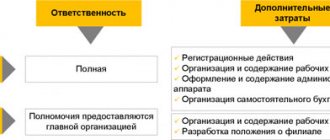“Your account is not validated. Send the password from the phone number to which your account is linked, and we will send you a validation code.” Many Russians began their acquaintance with the concept of validation with just such a simple “scam”, with the help of which scammers take over accounts on social networks. However, validation is a much broader and more serious process that is used in a wide variety of fields. In this article we will talk about what validation is, what it is and how it is carried out.
What is validation in simple words
Validation is the testing of a product, process or system to ensure it meets customer requirements. If a person buys a smartphone, he expects at least the ability to make calls, go online and take pictures with the built-in camera. All this can be specified in the operating instructions, but if the phone does not see the SIM card when you turn it on for the first time, and the pictures are not saved in memory, it is considered that the validation has failed.
In more complex cases, this term denotes the compliance of a process with a quality management system. As we can see, we are talking about external requirements, and this is how validation differs from verification, when the measure is the internal requirements of the organization and formal compliance with its own standards and documents (the phone has a camera, there is a place for a SIM card - this means that the product complies with the instructions, and Whether all this works with the required quality is up to the buyer to find out). Validation is important primarily for the consumer - he makes sure that he gets exactly what he needs.
The term “validation” comes from the English concept “validation” (loosely translated – “giving legal force”).
Methods for establishing the validity of the methodology
Often the concept of “validity” is discussed in the context of specific experiments or techniques. At the same time, a question may be raised about the validity of a certain method as a whole (for example, an assessment center or testing method). Such studies are carried out using meta-analysis.
There are three main methods for establishing the validity of a technique.
I. Assessing content validity
Content validity is the degree to which the content of tasks corresponds to the methodology of real activities in which the property measured in the methodology is demonstrated.
A special case of content validity is the so-called obvious (face or face) validity - the degree to which the methodology meets the expectations of those being assessed. For most methods, it is considered important that for the assessment participant the connection between the content of the assessment procedure and the real activity that is the object of assessment (family, professional, educational, etc.) is obvious. II.
Assessing construct validity Construct validity is the degree of validity that the technique measures truly specified and at the same time scientifically substantiated constructs. There are at least two strategies for establishing construct validity.
The first approach is “convergent validation” - checking the expected relationship of the results of a particular method with the indicators of other methods that measure similar characteristics. For example, if there are several methods for measuring a trait, it would be advisable to conduct experiments on at least two, and then if a high positive correlation of their results is identified, we can talk about validity. The main goal of convergent validation is to determine whether test scores will vary as expected.
The second approach is “divergent validation”.
The test of validity here is that the test cannot measure any trait that it should not theoretically be associated with. III. Assessment of criterion validity
Criteria-based validity is the degree of correspondence between external criteria, defined in advance, and the results of the methodology, determined by statistical methods. Such criteria could be:
- direct measures of the quality under study (such as the severity of a certain personality trait, the degree of development of an ability, the level of achievement in some activity, and so on), independent of the results of the methodology,
- indicators of organizational or socially significant performance results (key performance indicators (KPI or KPI), stability of family relationships, academic performance, and so on)
One type of criterion validity is the so-called “predictive” validity. This type of validity is used when a technique is called upon to make a certain prediction of human behavior. Accordingly, when the forecast is justified over time, this indicates that the technique is predictively valid.
Professional instrument developers must justify all of these types of validity and continually collect evidence for the validity of their instruments.
Types of Validation
There are four types of validation in total.
Prospective Validation
Performed before the start of mass production of products. It is checked to what extent the equipment is capable of producing exactly the product that the customer expects. The possibility of uninterrupted production of large quantities of product is also assessed. For prospective validation, one or more trial batches of the product are produced under the same conditions that will subsequently be normal.
Related Validation
It is not always possible to test products before mass production begins (for example, producing trial batches of exclusive products is very expensive). Therefore, validation is carried out directly during the normal production process.
Retrospective validation (revalidation)
This is a test of the process of serial production of a product after receiving information about how it behaves in real conditions. A good example is the automotive industry. If information is received, for example, about poor performance of the braking system in certain weather conditions, individual models or an entire series of cars with the same characteristics are recalled. As a result, technological production defects are identified or it is determined that the defects are random and there is no need to correct the process.
Revalidation
It is carried out when changes have been made to the technological process, and it is necessary to prove that they did not affect the quality and consumer properties of the final product. All changes in processes usually occur in accordance with change control regulations. During validation, the technologies themselves, the documents, and the final product are checked.
Other definitions of validation
Let's now look at the definitions of validation:
- A practical determination of how well a particular product meets the expectations of its direct users.
- A procedure that is performed when necessary. This is a common analysis of given conditions and an assessment of the performance of a product regarding its operation in a given environment. The result is a conclusion about the possibility of using a product or invention in a certain area.
- Confirmation of compliance with the requirements of the standards system, the customer, the direct user, etc.
- In simple words, the right product has been created to satisfy the consumer.
Who does the validation?
If the company is large, its structure most often has a special quality management department, which organizes the validation process. The second option is to attract third-party specialists from specialized companies. In both cases, let us pay attention to the fact that the task of the QMS employees (whether they are validation engineers or the position has a different name is not so important) is the organization; the direct implementation of validation procedures can be assigned to any employees.
The work as a whole is headed either by the head of the organization or by the director of the area. He sets goals and allocates material and financial resources, and also controls the result.
Next, quality management specialists (in-house or external) identify processes and products that need validation. Accordingly, the positions of such specialists should be filled with people who are well versed in production processes and have experience in auditing and financial analysis. They also require people management and motivation skills, since they often have to convince production workers to perform activities outside their direct responsibilities. And in general, authority is needed so that the tasks of the quality management department, or especially of a third-party company, are carried out in the least.
In some organizations, the sales manager is responsible for validation and has all the product and process information.
What is validation and how does it differ from verification?
In simple terms, validation is testing a product to see how well it meets its stated specifications. That is, any mobile phone will not pass validation until customers are sure that it has exactly the kind of camera and exactly the amount of memory for which they were willing to pay.
Verification is precisely the process that precedes product validation. That is, when the customer of the phone from the previous example checked it for compliance with the stated requirements, he verified the mobile phone. At the same time, the product verification process usually includes an analysis of the product: are all the necessary parts in place, are they working correctly, and so on.
And now again, but in comparison. Validation is the analysis of a product for its performance (whether the phone turns on and can make calls). Verification is a bureaucratic option, that is, during this process, testers check whether the components of the product meet the established technical manufacturing standards.
Perhaps standards professionals will say that this is too crude and incomplete an explanation, but it gives a general picture of what these strange words are.
Let's give another example. Let's imagine that a new drink is planned to enter the market. The manufacturing method and the required standards are sent to the factory. At the end of the production process, the manufacturer checks (verifies) the composition of the drink and its compliance with the declared standard. The customer of a batch of drinks conducts a series of tests to determine how much potential buyers like the drink in terms of taste. If no problems arise at this stage of verification, then the drink can be considered validated.
That is, the validation process checks whether the manufactured product has the result that manufacturers and developers expected during its design. It happens that a product passes the verification process, but in reality it turns out that it does not work. Thus, a validated product inspires greater confidence.
Validation steps
There are a total of 6 validation stages.
| Name | Content |
| Stage 1: User Requirements Specification (URS) | A general description of what users expect from a system, process, or product. |
| Stage 2: Function Specialization (FS) | Describes in detail what standards a system, process or product must meet to meet user requirements. |
| Stage 3: Specification (DS) | A complete description of the design, technical and other characteristics of the system, process or product, equipment parameters. |
| Stage 4: Installation Qualification (IQ) | Documents are verified to confirm that the system, process or product is built in accordance with the required standards and requirements. |
| Step 5: Operational Qualification (OQ) | Evaluates whether a system, process, or product performs within its specification conditions. If the specification for a car states that it accelerates to 100 km/h in 10 seconds, this data is checked on a flat test site without oncoming or passing traffic. |
| Step 6: Operational Qualification (PQ) | Evaluates how a system, process, or product performs under specific conditions. Using the example of accelerating a car to 100 km/h, it is tested whether it can do this in 10 seconds under normal road conditions. |
For each stage, protocols are drawn up, and then a final document, which is signed by all the specialists who carried out the validation and the manager. Based on the results of the audit, recommendations can be developed - this means that the system, process or product needs to be improved, and only after that they will be considered valid.
Kinds
Many people ask: “What is validation?” They say that there are no limits to a refined mind. Methodologists seem to be competing with each other to see who can discover or invent more types and types of validity. What names have appeared recently! It turns out there is:
- external and internal validity;
- convergent;
- discriminant;
- obvious;
- factorial;
- prognostic;
- constructive;
- criterial;
- meaningful and so on.
There is no way to understand, let alone intelligently distinguish one variation from another. Confusion in definition and classification leads to the fact that different authors attribute completely different ways of improving it to the same form of validity.
FAQ
How is validation different from verification?
Verification is the compliance of a system, process or product with the manufacturer’s requirements (standards, instructions, technical specifications, etc.). Validation is about meeting user requirements. There are also the following differences between them:
- validation is carried out by testers or users, verification is carried out by the manufacturer;
- the task of verification is to check whether production requirements are met; the task of validation is to check whether the consumer requirements for the final product are met;
- verification is mandatory, validation is carried out only if required by standards or consumers;
- verification is always objective (the product can either meet the specified technical characteristics or not); Validation is subjective (how successfully a product can be used in a particular setting is determined by people).
What is account validation on a social network? What is it for?
The account validation procedure is as close as possible to verification: the user documents that he is the real owner of the account and performs all actions that are performed from this account. Physical confirmation is carried out by linking your social network page to a phone number (you can only log into your account using the number with which the page is linked). Without account validation, it is impossible to use the social network (you can only view a limited number of pages). Any actions from your account are automatically considered performed by you.
Of course, account validation does not provide a 100% guarantee that the page corresponds to the owner of the phone number. There are services of virtual numbers for validation, a SIM card can be bought on someone else’s passport, but all these are not entirely permitted methods, for which in some cases you can be held responsible.
What is a valid e-mail ?
This is a valid email account, either registered to the recipient of the letter, or guaranteed to be used by him.
Using validation and verification in online services
Often, when registering on sites that do not want to create fake pages, new users are required to go through a verification process. It consists of receiving an SMS notification or email with a code, which you will then need to enter in order to confirm that you are in fact a real person and not a bot.
Various payment systems also put forward such requirements for their users. Most often, new users do not have access to full functionality until they send their passport details and confirm their phone number. After confirming the reality of your identity, your account is considered validated and you can now fully use the site’s services.
In this case, if you use the method of selecting synonyms, then the first version of verification is verification, but validation is confirmation, certification.
I would like to believe that this article has given you a rough understanding of what this beast of validation is and how it differs from its cousin verification. Do not confuse these two terms, because the purity and correctness of your language is the key to the understanding of words by other people.
Validation in transport
A validator (from the English valid - “valid, lawful”) is also a special device that is used to check electronic travel documents. In this way, the eligibility of a passenger to board public transport is determined. Often the validator is combined with a turnstile. This allows you to save significant amounts of money on organizing and monitoring passenger fares. Such devices are also used to control the passage of employees onto the territory of the enterprise.
Validation in a quality management system in accordance with ISO 9000 standards
Validation is confirmation, based on the provision of evidence, that requirements that are intended for a specific application or use have been fulfilled (ISO 9000:2005). There is a confirmation procedure by conducting an examination and providing objective information.
Validation steps:
- In development and design, approval indicates that a product has been assessed to determine whether it meets consumer needs.
- The approval process is usually carried out on the final product and under specified operating conditions. In some cases, validation is carried out early in production.
- The term "approved" is used to indicate the appropriate status. When a product is used in many ways, approval occurs multiple times (ISO 8402:1994, clause 2.18).
Equipment Validation
When producing equipment, all manufacturers indicate the specified properties of the product. These include:
- Terms of Use.
- Weight.
- Dimensions.
- Power supply parameters, etc.
Typically, users are primarily interested in: performance range, reliability and stability. It is the last two indicators that are studied during the inspection. Validation - what is it in simple words? Indications:
- For equipment that has been installed for the first time, it is necessary to carry out validation, and it is also recommended to do this after any movement.
- The frequency with which the validation is repeated determines the consistency of the equipment's performance.
- The frequency of equipment validation and analysis of the results is agreed upon with the customer. In some cases, equipment testing must be carried out on the eve of launch or after a long period of inactivity.
Product Validation
Product validation differs from other types in that in this case the entire production chain is taken into account (but not replaced), including equipment and process verification. The purpose of the audit is to certify that all procedures and processes performed will result in the production of the required product. Product validation is a complex of studies:
- Numerical indicators.
- Qualitative indicators.
The check is carried out at the initial stage of production and is repeated when any amendments are made to the product configuration.
Process Validation
Production validation involves proving that the process will produce the specified results. The check should be carried out when starting a new production process or when making amendments. The conditions for secondary validation after changes are made are negotiated with the customer or established based on the internal requirements of the enterprise.
For certain types of production, process validation must be carried out each time the line is started or after a long period of inactivity. In this case, a simplified validation plan is used, but the evaluation is more thorough.
Verification and Validation Examples
A drug manufacturing plant will always check whether they comply with specifications and standards (verification), but will not check whether these drugs are suitable for a certain patient with a certain set of symptoms (validation).
The company produces boots designed for country walks. These boots are fully compliant with specifications and this is checked for each pair (verification). But whether these shoes are suitable for high-altitude ascents remains to be determined separately (validation).
Another example that applies to almost any enterprise. The technical control department carries out verification, and auditors carry out validation.
Hello, dear readers! Welcome to the blog!
Validation - what is it in simple words? How is validation different from verification? The answers to these questions are in the article.
Many words “validation” and “verification” are considered synonymous. But that's not true. There is a difference, but it is very subtle. Let's figure it out.
How to check code for validity
There is no need to proofread the code and count characters - there are services and tools for checking HTML validity online for this.
What they check:
- Syntax Syntax errors: missing characters, misspelled tags.
- Tag nesting Unclosed and incorrectly closed tags.
According to the rules, tags are closed in the same way as they were opened, but in the reverse order. A common mistake is broken nesting . - DTD (Document Type Definition) Code compliance with the specified DTD, correctness of tag names, nesting, attributes. The presence of custom tags and attributes is something that is not in the DTD, but is in the code.
Typically, services divide the results into errors and warnings. Errors are typos in the code, missing or extra characters that are likely to create problems. Warnings are meaningless markup, extra characters, or some other errors that most likely will not harm the site, but go against the accepted standard.
Validators are not always right - some errors do not prevent browsers from reading the code correctly, but, for example, minification reduces the length of the code by removing extra spaces that do not affect its display.
Read on topic: Reduce website weight using gzip, brotli, minification and other methods
Therefore, analyze the proposals of correction services and use common sense.
Before correcting errors, do not forget to make a backup. If you fix the code, but something goes wrong and it no longer displays as it should, you can roll back everything.
How errors in HTML threaten a site
Common code errors include unclosed or duplicate elements, incorrect or missing attributes, missing UTF-8 encoding or missing document type.
What problems can arise due to errors in the HTML code?
- pages load slowly;
- the site does not display correctly on different devices or browsers;
- visitors do not see all the content;
- the programmer does not notice hidden advertising and malicious code.
How Code Validity Affects SEO
Validity is not a ranking factor in Yandex or Google, so it does not directly affect the site’s position in search engine results. But it affects the mobile-friendliness of the site and how search bots perceive the markup, and this can indirectly affect positions or traffic.
Read on topic: The main thing about micro markup: a selection of knowledge for webmasters
Google spokesman John Mueller spoke about the validity of the code:
“We mentioned using proper HTML.
Is HTML validity to the W3C standard a ranking factor? This is not a direct ranking factor. If your site is using bad HTML, that doesn't mean we'll remove it from the index - I think we'll then have empty search results. But there are several important aspects:— If the site really has broken HTML, then it will be very difficult for us to scan and index it. - Sometimes it's really hard to come up with structured markup if the HTML is completely broken, so use a markup validator. “Another aspect is about mobile devices and cross-browser support: if you break the HTML, then the site is sometimes very difficult to render on new devices.”
So, critical errors in HTML get in the way
- crawling the site by search bots;
- defining structured markup on a page;
- rendering on mobile devices and cross-browser compatibility.
Even if you are confident in your code, it is better to check it - errors can occur due to the installation of themes, third-party plugins and other elements, and be invisible. Not all programmers are guided by the W3C standard, so among ready-made solutions there may be products with errors, especially among free ones.
Where would it be appropriate to apply Validation? What is it?
Let's look at examples:
- In the IT field, many people have probably encountered a request to undergo validation when confirming an account on various services.
- In the medical field - let's say a certain medicine was created, the results of numerous checks and tests showed that the medicine is really effective and treats this disease, but it is not suitable for everyone. In this case, doctor validation is required to confirm that this medicine is suitable for you.











